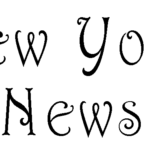A Philanthropist’s Feedback Exposed During Museum Revamp: His Disdain for the Redesign
The New York Times
During the renovation of a prominent museum, a surprising revelation has surfaced regarding a major donor’s displeasure with the new design. The donor’s feedback, which was previously undisclosed, has sparked a reevaluation of the renovation plans and raised important questions about the role of donors in shaping the artistic and architectural direction of cultural institutions.
Unveiling the Donor’s Disapproval
As the museum underwent renovations, the donor’s dissatisfaction with the new design came to light, shedding a new light on the dynamics between donors and the institutions they support. The revelation has prompted a reexamination of the renovation plans, as well as a broader conversation about the influence of donors on artistic and architectural decisions.
The Power of Philanthropy
This unexpected turn of events underscores the significant impact that philanthropists can have on the cultural landscape. While their financial contributions are crucial for the sustainability of museums and other cultural institutions, the incident serves as a reminder of the need to balance the influence of donors with the artistic vision and integrity of the institution.
What lessons can other organizations in the cultural sector learn from this incident?
Meta Title: Unveiling a Donor’s Disdain: His Message of Dislike Discovered During Museum Renovation
Meta Description: A shocking discovery was made during a museum renovation, revealing a donor’s disdainful message towards the institution. Read on to learn more about this intriguing story and its implications.
Unveiling a Donor’s Disdain: His Message of Dislike Discovered During Museum Renovation
In a recent museum renovation project, workers made a surprising and controversial discovery. Behind a decorative wall panel in a prominent exhibit hall, a message was found etched into the plaster. This message, it turns out, was a clear expression of disdain towards the museum by one of its past donors.
The museum, which has been a cultural landmark in the community for over a century, has always been proud of its contributions to the arts and education. In light of this shocking discovery, however, questions are raised about the nature of relationships between donors and cultural institutions.
The Discovery
The museum had been undergoing a comprehensive renovation, with the aim of modernizing its facilities and enhancing the visitor experience. As part of the renovation, an old wall panel in one of the exhibit halls was being removed. What the workers found behind it left them astonished.
Etched into the back of the panel were words that read, “I regret ever donating to this place. It is a disgrace to the arts.” These disparaging words were signed by a prominent donor from the museum’s past, whose significant contributions had helped the institution flourish over the years.
Implications
The discovery of this message has sent shockwaves through the museum and the local community. It raises important questions about the dynamics between museums and their donors, as well as the responsibilities and expectations that come with philanthropy.
The museum’s leadership has been quick to address the situation, emphasizing the vital role that donors play in supporting the arts and culture. They have also expressed a commitment to maintaining open and transparent communication with their supporters, in order to ensure that their contributions are valued and respected.
The incident has sparked a broader conversation about the relationship between donors and cultural institutions. It serves as a reminder that donors are not just financial supporters, but also stakeholders in the mission and values of the organizations they support.
Moving Forward
In the wake of this discovery, the museum has taken proactive steps to reinforce its relationships with donors. It has initiated a series of open forums and discussions with current and past donors, with the goal of addressing any concerns and ensuring that their contributions are aligned with the museum’s vision and values.
Furthermore, the museum has launched an initiative to publicly acknowledge and celebrate its donors, not only for their financial support but also for their role in advancing the institution’s mission. This includes the creation of a donor recognition program and the establishment of dedicated spaces within the museum to honor their contributions.
Lessons Learned
This incident underscores the importance of nurturing and maintaining positive relationships with donors within the cultural sector. It serves as a cautionary tale for other organizations, highlighting the potential consequences of neglecting the concerns and expectations of their supporters.
For museums and cultural institutions, this discovery is a powerful reminder of the need to prioritize donor stewardship and engagement. By actively involving donors in the institution’s activities and decision-making processes, museums can demonstrate their commitment to valuing and respecting their contributions.
Conclusion
The discovery of a donor’s disdainful message during a museum renovation has provided valuable insights into the complexities of the relationships between cultural institutions and their supporters. It serves as a wake-up call for museums and other organizations to prioritize donor stewardship and engagement in order to maintain positive and mutually beneficial relationships with their supporters.
This incident has prompted the museum to reevaluate its approach to donor relations, with a renewed focus on open communication and appreciation for the contributions of its supporters. It is a reminder to all cultural institutions of the importance of valuing and respecting the donors who play a vital role in sustaining and advancing the arts and culture.
A Call for Transparency and Collaboration
The incident also highlights the importance of transparency and open communication between donors and cultural institutions. In order to avoid potential conflicts and ensure that the artistic and architectural integrity of museums is preserved, it is essential for donors and institutions to engage in meaningful dialogue and collaboration throughout the process of renovation and development.
Reimagining the Relationship Between Donors and Institutions
Moving forward, the museum renovation serves as a catalyst for reimagining the relationship between donors and cultural institutions. By fostering a more collaborative and transparent approach, museums can harness the support of philanthropists while upholding their artistic and architectural vision.
the revelation of a donor’s disapproval during a museum renovation has sparked a broader conversation about the influence of philanthropists on cultural institutions. It serves as a reminder of the need for transparency, collaboration, and a balanced approach to donor involvement in shaping the artistic and architectural direction of museums.


